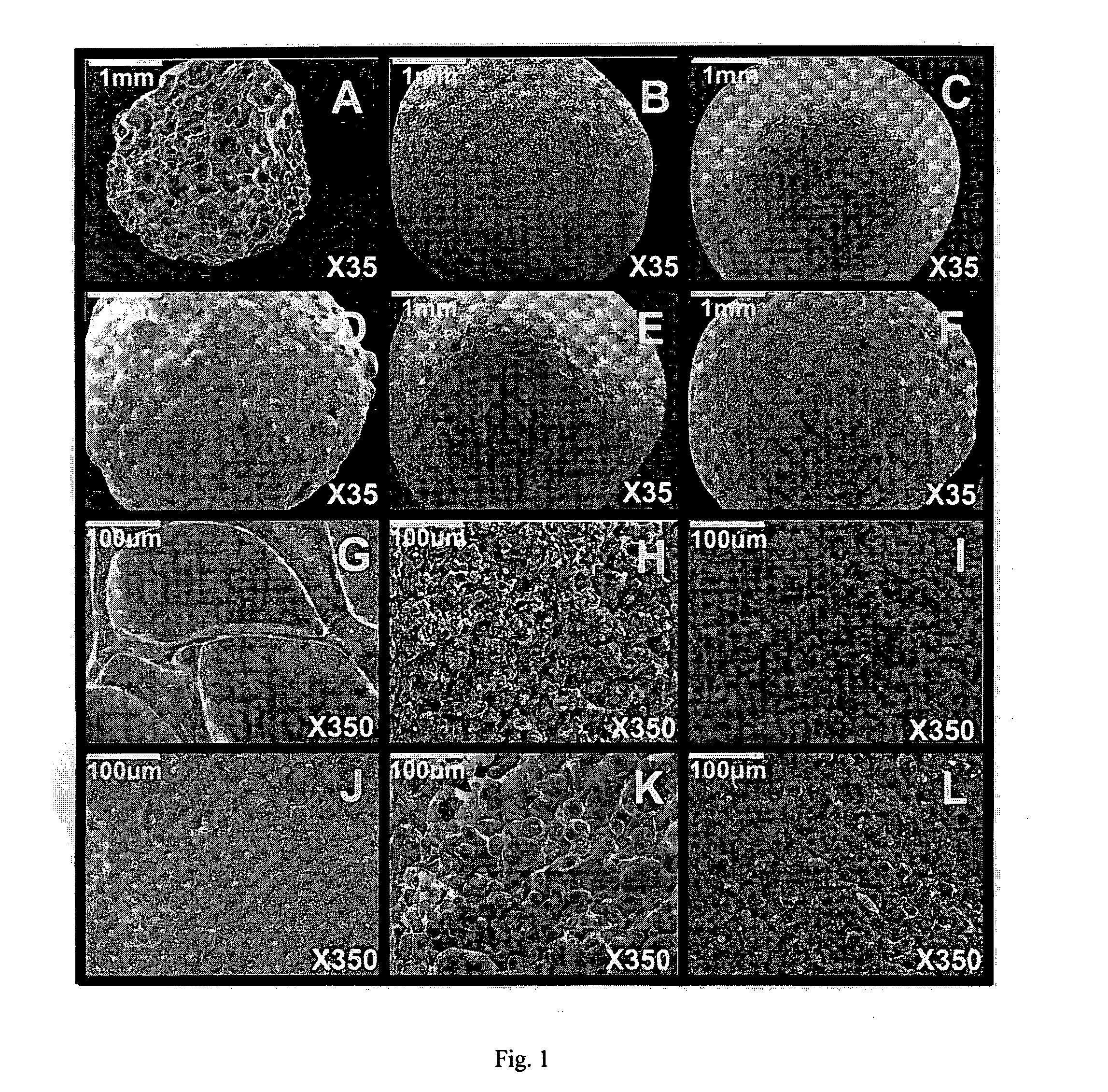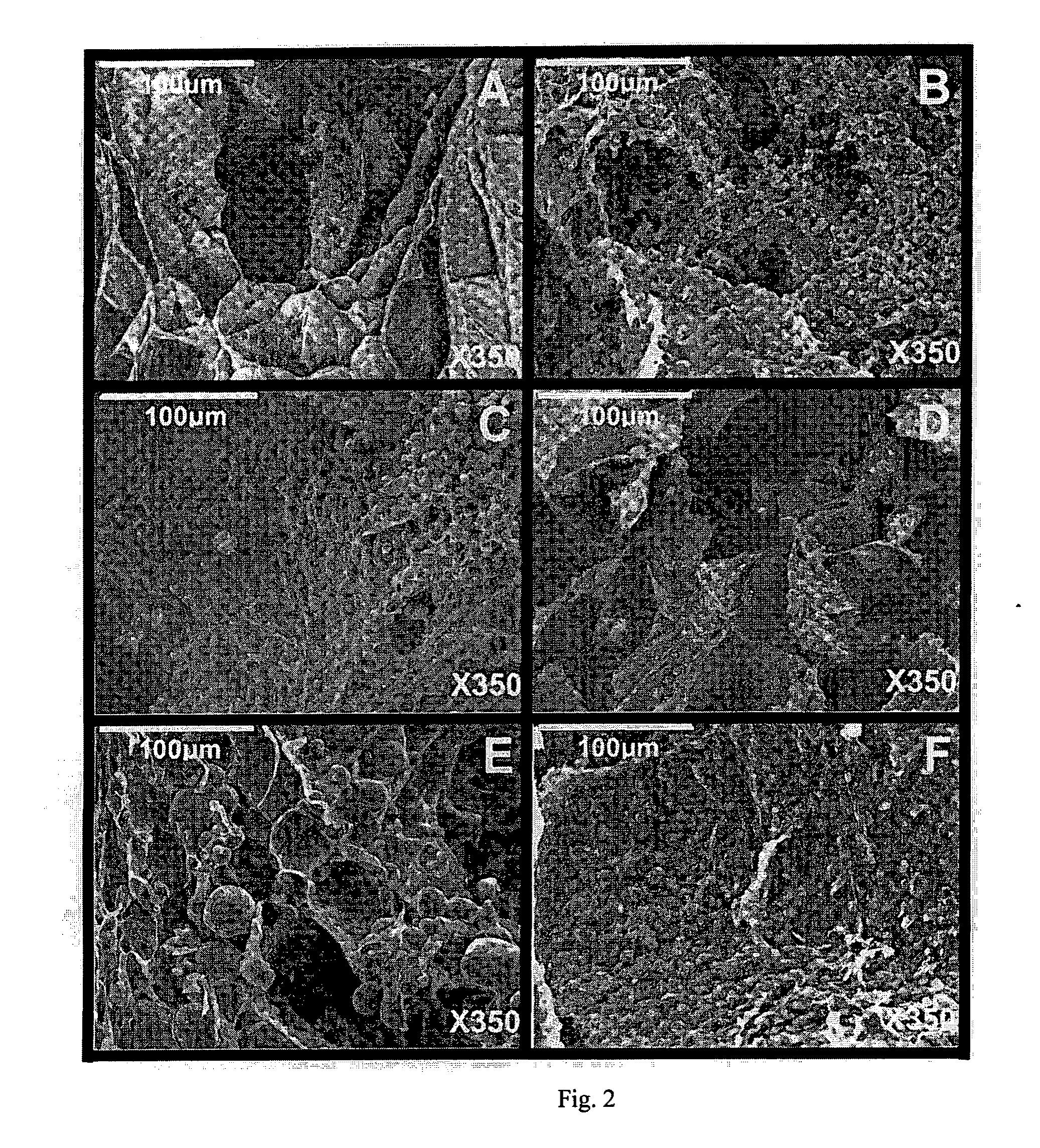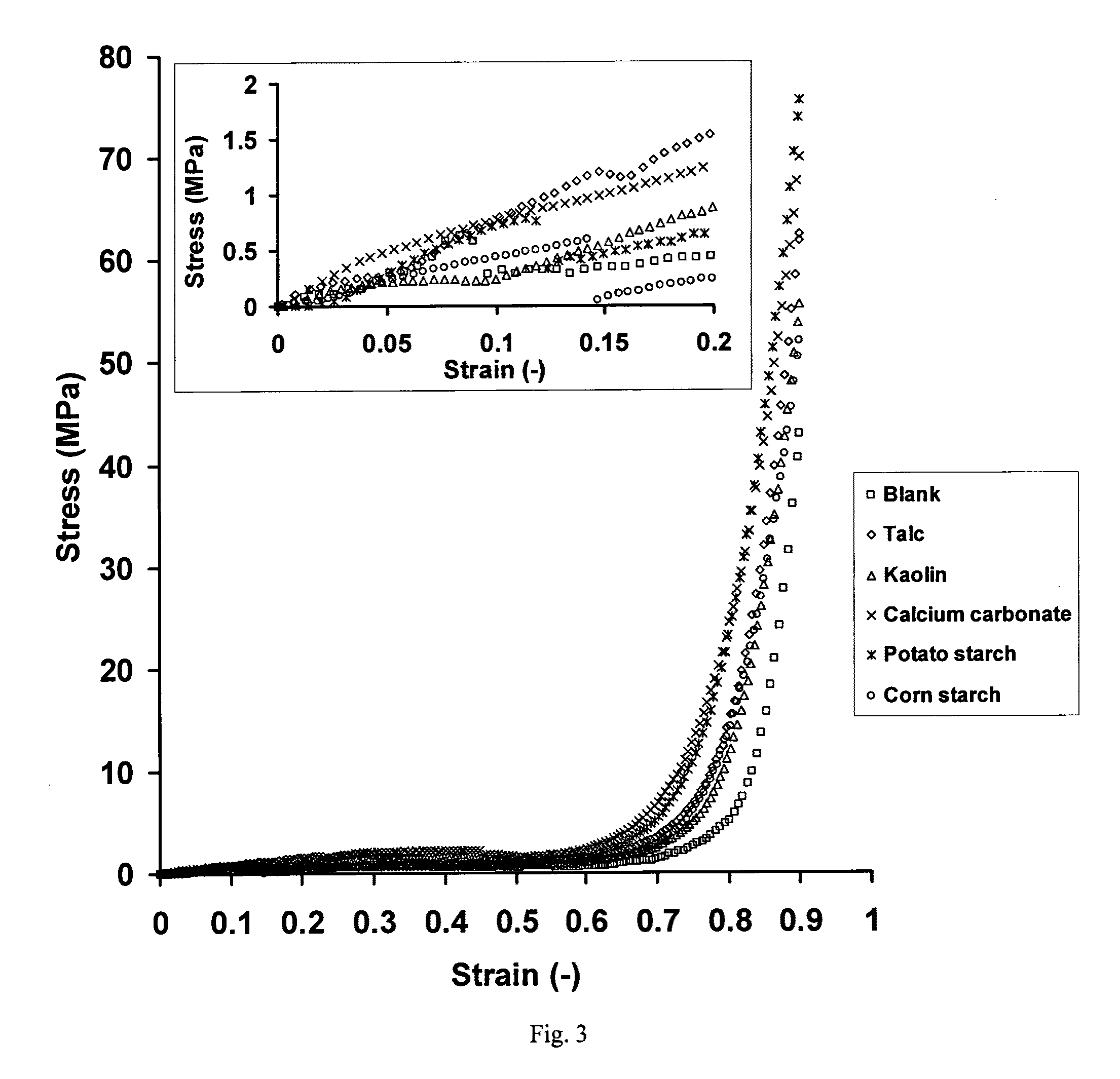Hydrocolloid carrier beads with inert filler material
a technology of filler material and carrier beads, which is applied in the direction of biocide, animal husbandry, pharmaceutical delivery mechanisms, etc., can solve the problems of small effect on the target organism, limited cumulative quantity of drugs that can be administered to the patient, and detrimental effects on many other non-target organisms. , to achieve the effect of increasing mechanical strength, increasing surface roughness of beads, and increasing compressibility
- Summary
- Abstract
- Description
- Claims
- Application Information
AI Technical Summary
Benefits of technology
Problems solved by technology
Method used
Image
Examples
examples 1a-3e
Bead Compositions
Examples 1A-1E
[0124]Beads were prepared with sodium alginate and 10% w / w of filler. In Example 1A, the filler was talc, in Example 1B, the filler was kaolin, in Example 1C, the filler was calcium carbonate, in Example 1D, the filler was potato starch and in Example 1E, the filler was corn starch (Table 1).
[0125]Sodium alginate powder, with a molecular mass of 60 to 70 kDa and containing 61% mannuronic acid and 39% guluronic acid (Sigma Chemical Co., St Louis, Mo.), was dissolved in double-distilled water at room temperature (3%, w / w) using a magnetic stirrer (Freed Electric, Haifa, Israel). Five different fillers (10%, w / w)
[0126]were used: talc (Mw: 379.29, particle size: <5 μm) (Sigma), kaolin (Mw: 258.17, particle size: 0.1-4 μm) (Sigma), calcium carbonate (Mw: 100.09, particle size: 0.15-0.85 cm) (Merck, Darmstadt, Germany), potato starch (Mw: varies, particle size: 15-100 μm) (Sigma) and corn starch (Mw: varies, particle size: 5-25 μm) (Sigma).
[0127]In pharmaceu...
examples 2a-2e
[0130]Beads were prepared with agarose 3% w / w and 10% w / w of filler. In Example 2A, the filler was talc, in Example 2B, the filler was kaolin, in Example 2C, the filler was calcium carbonate, in Example 2D, the filler was potato starch and in Example 2E, the filler was corn starch (Table 1).
[0131]Agarose powder was dissolved in pre-heated double-distilled water (3%, w / w) at 90° C. After cooling the solution to 50° C., the different fillers (10%, w / w) were added.
[0132]In order to produce spherically shaped beads, the solution containing agarose and filler was dropped into double-distilled water through a paraffin oil layer (˜5 mm) (Frutarom Ltd.).
examples 3a-3e
[0133]Beads were prepared with sodium alginate and 10% w / w of filler. In Example 3A, the filler was talc, in Example 3B, the filler was kaolin, in Example 3C, the filler was calcium carbonate, in Example 3D, the filler was potato starch and in Example 3E, the filler was corn starch (Table 1).
[0134]Gelrite gellan gum powder (Sigma) was dissolved in pre-heated double-distilled water (2%, w / w) at 90° C. After cooling the solution to 50° C., the different fillers (10%, w / w) were added. Gellan beads were produced by dropping the solution containing gellan and filler into a CaCl2 cross-linking solution (2%, w / w) through an oil layer.
[0135]The gellan beads were kept in the cross-linking solution for 24 h to ensure an equilibrium state. Then, the beads were washed with double-distilled water and dried to remove excess surface ions. Beads containing no filler were also produced and served as blanks.
[0136]Drug Loading
[0137]Beads for release purposes were produced according to the procedures d...
PUM
| Property | Measurement | Unit |
|---|---|---|
| Fraction | aaaaa | aaaaa |
| Fraction | aaaaa | aaaaa |
| Fraction | aaaaa | aaaaa |
Abstract
Description
Claims
Application Information
 Login to View More
Login to View More - R&D
- Intellectual Property
- Life Sciences
- Materials
- Tech Scout
- Unparalleled Data Quality
- Higher Quality Content
- 60% Fewer Hallucinations
Browse by: Latest US Patents, China's latest patents, Technical Efficacy Thesaurus, Application Domain, Technology Topic, Popular Technical Reports.
© 2025 PatSnap. All rights reserved.Legal|Privacy policy|Modern Slavery Act Transparency Statement|Sitemap|About US| Contact US: help@patsnap.com



